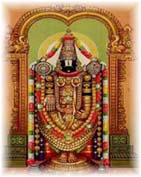Chapter One: Observing the Armies at the Battlefield of
Kuruksetra
- Introduction (1.1 – 27)
- Arjuna’s doubts (1.28 – 42)
Chapter Two: Contents of the Gita Summarized
- More Doubts: (2.1 - 10)
- Jnana: (2.11 - 30)
- Karmakanda: (2.31 - 38)
- Buddhi Yoga (Niskama Karma) (2.39 – 53)
- Samadhi: (2.54 – 72)
Chapter Three: Karma-yoga
- Renunciation or Work: (3.1 – 2)
- Niskama Karma (3.3 - 9)
- From Karmakanda to Karma Yoga (3.10 – 16)
- Niskama Karma to set the correct example (3.17 – 32)
- Beware of lust and anger (3.36 – 42)
Chapter Four: Transcendental Knowledge
- Transcendental knowledge about Krishna (4.1 – 10)
- Applying transcendental knowledge (4.11 – 15)
- Understanding karma on the platform of Jnana (4.16 – 24)
- Sacrifices lead to transcendental knowledge (4.16 - 24)
- Conclusion (4.34 – 42)
Chapter Five: Karma-yoga – Action in Krishna Consciousness
- Niskama Karma is equal to but easier than renouncing work (5.1
– 6)
- The Performance of Niskama Karma (5.7 – 12)
- Knowledge: the three doers in perspective (5.13 – 16)
- Liberation: focusing on the Supersoul (5.17 – 26)
- Liberation: Astanga Yoga preview (5.27 – 28)
- Peace on the platform of liberation (5.29)
Chapter Six: Dhyana Yoga
- Advancing in Yoga through detached work: (6.1 – 4)
- The Yogarudha stage: Giving up work (6.5 – 9)
- Further stages in practice of Yoga (6.10 – 32)
- Necessity of controlling the turbulent mind (6.33 – 36)
- The destination of unsuccessful Yogi (6.37 – 45)
- The topmost Yogi (6.46 – 47)
Chapter Seven: Knowledge of the Absolute
- Knowing Krishna by hearing about Him (7.1 – 3)
- Knowing Krishna as the source of material and spiritual energies
(7.4 – 12)
- The three gunas are controlled by Krishna (7.13 – 14)
- Impious don’t surrender to Krishna, pious develop knowledge
and surrender (7.15 – 19)
- Those lacking knowledge also don’t surrender to Krishna (7.20
– 26)
- Bewilderment and freedom through knowledge about Krishna (7.26
– 30)
Chapter Eight: Attaining the Supreme
- Krishna answers Arjuna’s seven questions (8.1 – 4)
- Remembering Krishna at the time of death (8.5 – 8)
- Remembering Krishna (8.9 – 13)
- Pure devotional service (8.14 – 16)
- Material and spiritual worlds (8.17 – 22)
- The supremacy of pure devotion in attaining Krishna (8.23 –
28)
Chapter Nine: The Most Confidential Knowledge
- Hearing about Krishna (9.1 – 3)
- Aisvarya Jnana (9.4 – 10)
- Worshiping Krishna (9.11 – 15)
- Indirectly worshiping Krishna (9.16 – 25)
- Glories of directly worshiping Krishna (9.26 – 34)
Chapter Ten: The Opulence of the Absolute
- Understanding and serving Krishna (10.1 – 7)
- The Catur Sloka (10.8 – 11)
- Arjuna hears about Krishna’s opulences (10.12 – 18)
- Krishna’s opulences (10.19 – 42)
Chapter Eleven: The Universal Form
- Krishna describes His universal form (11.1 – 9)
- Sanjaya’s description of Arjuna’s vision (11.10 –
31)
- Arise and fight (11.32 – 34)
- Arjuna’s prayers (11.35 – 46)
- Only pure devotees can see Krishna’s two armed form
(11.47 – 55)
Chapter Twelve: Devotional Service
- Bhakti over Impersonalism (12.1 – 7)
- Progressive stages of devotion (12.8 – 12)
- Qualities that endear on to Krishna ( 12.13 – 20)
Chapter Thirteen: Nature, the Enjoyer and Consciousness
- Arjuna’s six questions (13.1 - 2)
- Krishna’s answers (13.3 – 7)
- The process of knowledge and liberation (13.8 – 12)
- The object of knowledge (13.13 – 19)
- Prakriti and Purusa (13.20 – 26)
- Jnana Caksusa: The vision of knowledge (13.27 – 35)
Chapter Fourteen: The Three Modes of Material Nature
- The liberation and conditioning of the living entity
(14.1 – 4)
- The modes bind the pure soul (14.5 – 18)
- Recognizing a modes’s supremacy (14.10 – 13)
- Actions and death within modes (14.14 – 18)
- Transcending the modes (14.19 – 27)
Chapter Fifteen: The Yoga of the Supreme Person
- Becoming detached from material world (15.1 – 5)
- Transmigration of the living entity (15.6 – 11)
- Krishna’s position as the maintainer (15.12 – 15)
- Kinds of living entities (15.16 – 20)
Chapter Sixteen: The Divine and Demoniac Natures
- Transcendental and demoniac qualities (16.1 – 6)
- Demoniac nature (16.7 – 20)
- Attaining the supreme destination (16.21 – 24)
Chapter Seventeen: The Divisions of Faith
- Faith and worship in the modes of material nature
(17.1 – 7)
- Foods in the modes (17.8 – 10)
- Sacrifices in the modes (17.11 – 13)
- Austerity in the modes (17.14 – 19)
- Charity in the modes (17.20 – 22)
- The conclusion: OM TAT SAT (17.23 – 28)
Chapter 18: Conclusion – The Perfection of Renunciation
- Summary of chapters 1-6: Karma sections (18.1 – 12)
- Summary of chapters 1-6: Jnana sections (18.13 – 18)
- The modes control all activities (18.19 – 40)
- Freedom from reaction by occupational work (18.41 – 48)
- From Niskama Karma to pure devotional service to Krishna (18.49
– 55)
- Working in pure devotional service (18.56 – 60)
- Surrender to the Supersoul (18.61 – 63)
- The most confidential knowledge (18.64 – 66)
- Preaching and studying Bhagavad Gita (18.67 – 71)
- Arjuna is firmly fixed (18.72 – 73)
- Sanjaya’s Predictions (18.74 – 78)

